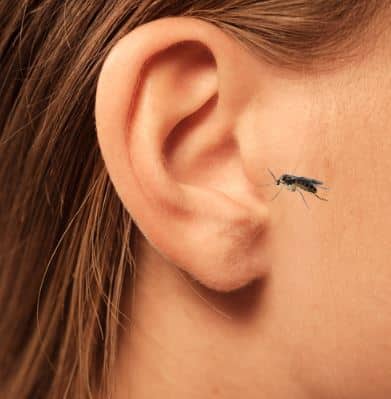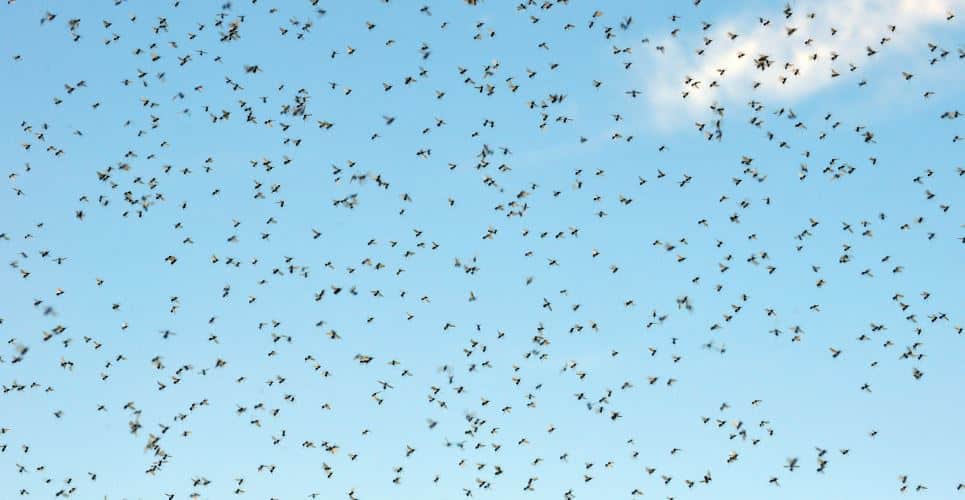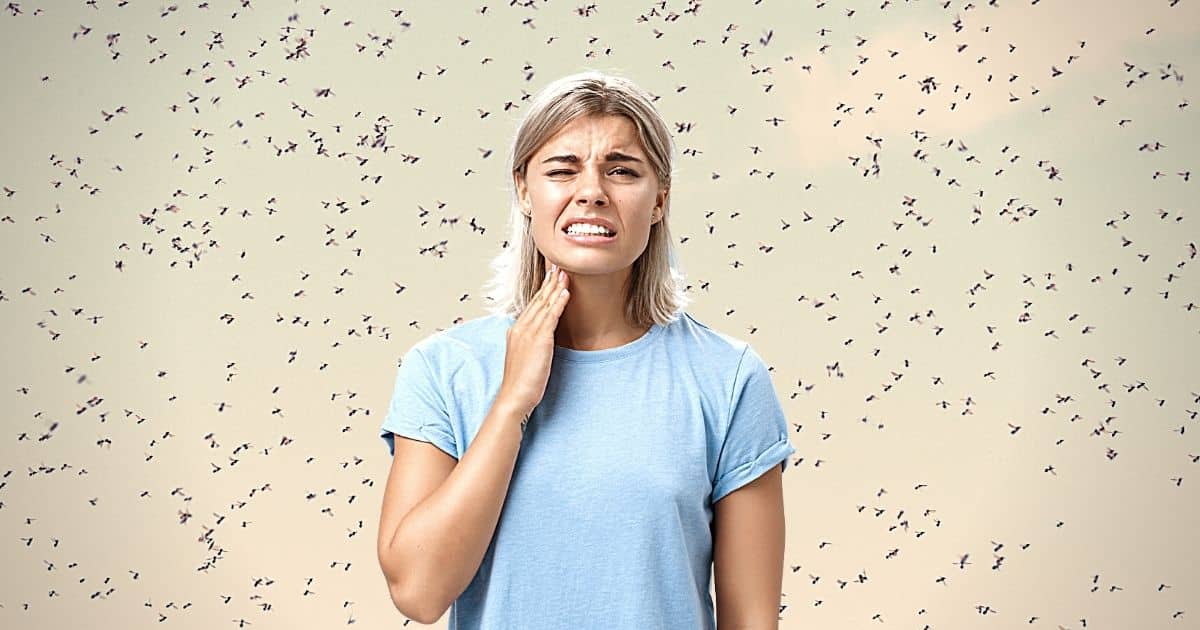 Essentially all texts and articles related to cerumen (ear wax) state that it, along with ear hair, seems to “discourage” insects from entering the ear canal or to protect the ear canal from insects. Cerumen is said to protect the ear canal from drying out and, since it is bitter (their words, not mine), noxius, and sticky, prevents the intrusion of insects and other foreign bodies.
Essentially all texts and articles related to cerumen (ear wax) state that it, along with ear hair, seems to “discourage” insects from entering the ear canal or to protect the ear canal from insects. Cerumen is said to protect the ear canal from drying out and, since it is bitter (their words, not mine), noxius, and sticky, prevents the intrusion of insects and other foreign bodies.
Speech-Language-Development.com says of cerumen, “It’s a natural insect repellent! Cool, huh? Who wants insects crawling around in their ear canals? Not me! Fortunately, our ears are endowed by their Creator with a substance insects find icky”.
Following these lines of explanation for cerumen, it would be logical to think that insects would avoid the ears.
However, if you’ve ventured into Southern Utah between late May through the first part of July, you would know that such comments are as laughable as Rodney Dangerfield gaining “respect.” Or, perhaps as laudable as saying that ear anatomy is designed to discourage birds from flying into the ear (in reality, the ear canal is too small, but that is beside the point).
And, if you have ventured in my area at the right time of the year and have been in the juniper tree areas, you would know exactly what I’m talking about – where you are bombarded by little “midges”, “cedar gnats”, or “no-see-ums”, whatever you want to call them.

These very small insects make their appearance here at that time of the year, with favorite targets being the ears, in the hair on the scalp, and ankles, driving you crazy.
And when these little buggers bite, their evil little wounds itch worse than mosquito bites. In reality, the no-see-um IS the State bird of Utah, just as the mosquito is the State bird of Minnesota.
In fairness, it should be mentioned that these midges seem to find their way throughout the world and are known by other names such as: sandflies, noseeums, no-see-ums, nicnics, nic nics, hop-a-long, biting midge, punkie, punky, sandfly, sand flea, sand fly, black flies, black gnats, manta blanca, palomilla, asa branca, quemadores and pringadores. Regardless of what they are called, these little insect pests constantly buzz the ears, bite, and are aggravating!
Having experienced no-see-ums first hand (or should I say first ear), I have to wonder what in the ear canal “discourages” them? If it means that hundreds of ear bombardments per minute are acceptable over thousands anticipated, then I guess that the no-see-ums have been “discouraged” from entering the ear due to ear wax.
And, as to hair being a hindrance, convince me that the multiple bite “bumps,” some rather large and in the scalp (even for those who have hair), are figments of peoples’ imaginations. They seem to go through hair as easily as a hot knife through butter – only faster. And, what about those ear canals that have essentially no hair?
So, in deference to writers and texts that regurgitate the notion that cerumen discourages insects from entering the ear canal, at least here in Southern Utah, whatever we have in our ears actually seems to attract them – at least as far as no-see-ums are concerned! And, I can’t believe that we are so exceptional here that our species is substantially different than that of the rest of the world and an exception to the “protection” theories related to cerumen.
What Are These Ear Antagonists?
 No-see-ums are small, mosquito look-a-likes of the Midge family. They represent a very large group in the taxonomic order of flies or Diptera. There are at least 2000 different species in North America alone. They often occur in huge swarms, usually in the evening.
No-see-ums are small, mosquito look-a-likes of the Midge family. They represent a very large group in the taxonomic order of flies or Diptera. There are at least 2000 different species in North America alone. They often occur in huge swarms, usually in the evening.
You might see them “dancing” in the air, in columns rising up from the ground. Sometimes they will rest in large numbers on walls, screens and buildings, particularly during the warmer part of the day. When present in large numbers, they can be annoying. Most midge species don’t bite.
However, the term no-see-ums refers to the ones that DO bite. And, their buzzing and sensation in the ear is aggravating and a constant irritation. In Southern Utah biting midges — aka no-see-ums –are often called cedar gnats. You may also hear them referred to as punkies or moose flies as well as numerous other names not mentionable in print.
Feed on Me
Contending with no-see-ums is akin to a variation of the song “Lean on Me” – in this case, more appropriately titled “Feed on Me.” No-see-ums can surprise you because their bite is completely out of proportion to their tiny size—which is less than 1/8 of an inch long – hence the name, no-see-ums. Like mosquitoes, only the female bites because she needs a blood meal to produce eggs. Unlike mosquitoes, no-see-ums don’t puncture the skin. They cut it open with their scissor-like mandibles. Then they squirt a chemical on the open wound to prevent clotting. Finally they suck up the resulting pool of blood through their proboscis, a straw-like structure near their mouth.
Think of no-see-ums as miniature blenders making a smoothie out of you! And they always seem to attack the ears (where mosquitoes almost never bite), and their bites itch like crazy.

No-see-ums hatch in (non-flying) larval form from eggs laid in Spring or early Summer in fissures in the bark of Juniper trees, and crawl around the fissures eating plant debris and algae. The larvae over-winter in the bark fissures until the following Spring, between May 15th and June 15th, when they pupate (like what a caterpillar does to become a moth or butterfly), mate, feast, and lay eggs (up to 100 in a batch) and become adult flying drones focusing on the ears. They are not easily seen, but when close to the ear, their buzzing is as obnoxious as a chain saw and it is essentially impossible not to swat at your ear to drive them away.
The males typically emerge first, and wait around for the females to appear. Mating often occurs at the site of a blood host, shortly after the female has fed. In this case, we are the blood host guests of honor and the medium for propagation.
Adult no-see-ums don’t typically eat blood, but rather subsist on nectar, and in fact they serve as pollinators for some flowers. But the female requires a blood meal to produce eggs (just like mosquitoes) and she seeks a vertebrate (there are indications that she may hone in on CO2 exhalations to do so) from which to obtain it. So far, this sounds pretty much like the deal with mosquitoes. But here’s where it gets different.
A female mosquito pokes a teensy hole in your skin with its specialized proboscis, injects a bit of anti-coagulant, and then sucks up your blood through the same organ. The itching you experience is a reaction to the anti-coagulant.
But no-see-ums use their mandibles to actually saw a hole in your skin, spit anti-coagulant onto the wound, and then suck up the pooling blood with its non-piercing proboscis. It’s a sort of more “violent” wound, and this may be why their bites are so much more annoying (and lasting) than those of mosquitoes.
The bites aren’t really harmful to humans, with the important exception of people who experience an excessive allergic reaction to the anticoagulant.
So, how do the statements in the initial paragraph about cerumen as protection against insects mesh with reality? They don’t, unless no-see-ums are the insects of exception. Unfortunately, our professional hearing disciplines appear to keep repeating an assumption, but there seem to be major exceptions to the rule. So, we have to ask, are our texts and teachings stating cerumen protects against insects a triumph of ignorance over science, or do we just still have a lot more to learn? I suspect, the latter.
And finally, after having presented a case against treasured assumptions relative to the ear canal and one of its protective functions, it would seem to be unfair to not present approaches that have been used to keep no-see-ums from the ears.
These will be discussed next week in Part II of this blog.







